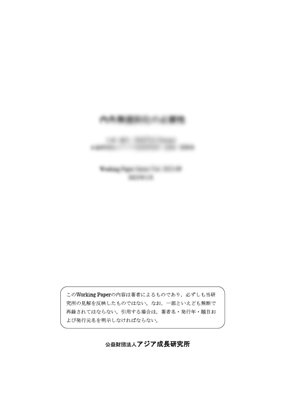The Impact of U.S. Steel Protection on Northeast Asian Producers: General Equilibrium Assessments

| 執筆者 | Hiro Lee, Dominique van der Mensbrugghe |
|---|---|
| 発行年月 | 2002年 12月 |
| No. | 2002-34 |
| ダウンロード | 225KB |
内容紹介
In March 2002, the United States imposed tariff-rate quotas (TRQs) of about 30 percent on most imported steel above set quotas. This measure is expected to reduce steel exports from East Asian countries, particularly from Japan and Korea. At the same time, the U.S. action is likely to harm its automobile, metal products, and other related industries by raising the cost of intermediate input. Using a dynamic multi-country computable general equilibrium (CGE) model, we evaluate the effects of U.S. steel protection on the economic welfare, steel trade, and sectoral output and unit cost of the United States and its trading partners, with particular attention to those of Japan, China, Korea, and Taiwan, over the period 2002-2005. The results indicate that although the U.S. welfare increases slightly in 2002-2003, it declines in 2004-2005 mainly because the price of steel increases in the U.S. market. U.S. steel imports from East Asian countries and the EU decline by 2.5-2.8 percent, whereas those from Canada and Mexico increase by 2.2 percent, thus largely offsetting the fall in the total U.S. steel imports. The protection causes output contraction in the steelconsuming industries in the United States and output expansion in those industries in Japan, Korea, and Taiwan, but these effects are extremely small. These results suggest that the impact of the U.S. imposition of TRQs is minimal.
